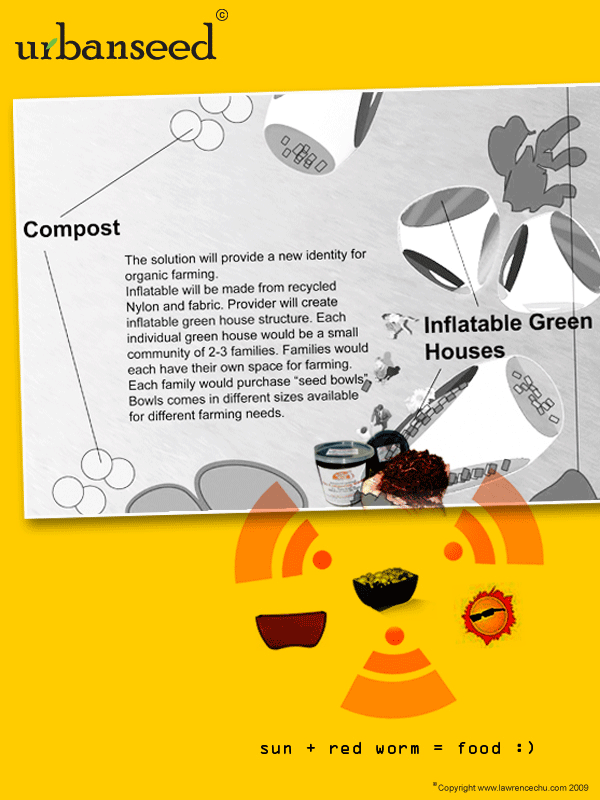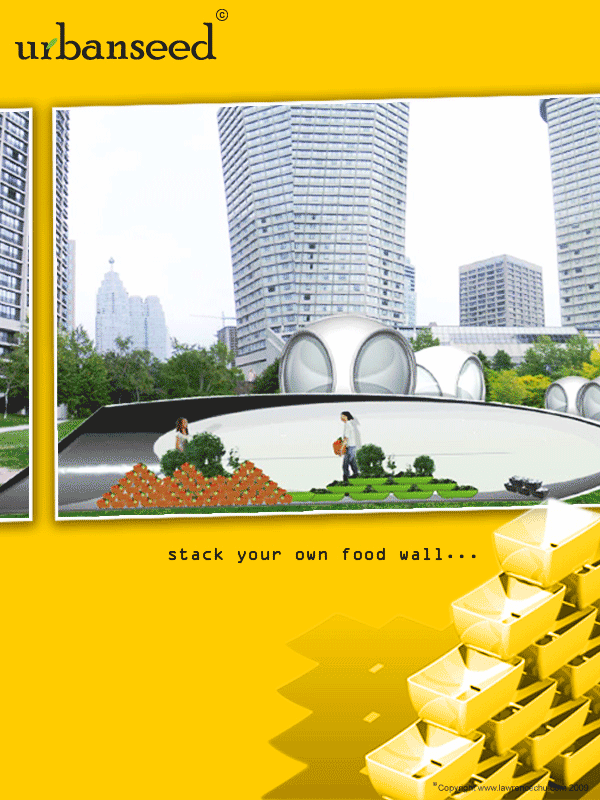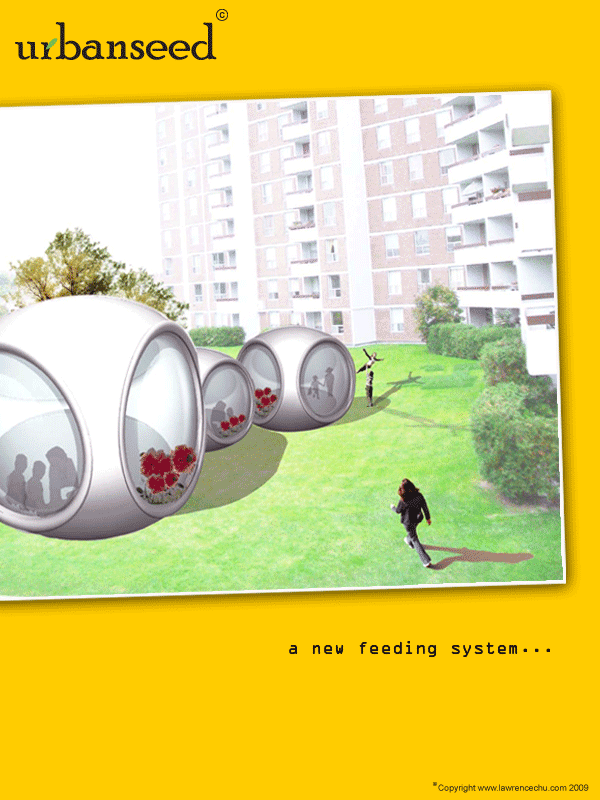
Urbanseed by Lawrence Chu from china
designer's own words:
Problem:
Food retailing market is a million dollar market; our food supply chain employs provide about 1/7% of the job market. Currently.. our food system is energy inefficient... food supply chain is the largest energy user in most countries.
The systems that produce the world's food supply are heavily dependent on fossil fuels. Vast amounts of oil and gas are used as raw materials and energy in the manufacture of fertilizers and pesticides, and as cheap and readily available energy at all stages of food production: from planting, irrigation, feeding and harvesting, through to processing, distribution and packaging.
Food travels further than any other product–129 km compared to the average product travel of 94 km.
The organic sector could be leading the development of a sustainable food system. Direct environmental and ecological impacts of agriculture ‘on the farm’ are certainly reduced in organic systems. However, global trade and distribution of organic products fritter away those benefits and undermine its leadership role.
There’s food waste happening before and after every meal that’s either caused directly by the user or indirectly by the system. Incheon on average produced about 600 tons of food wastes since 2001.
Change:
Living in the city we are disconnected to the origins of our food chain. We need to re-connect to our food source. This project aims to set new standards for the current food chain. Beginning from the core of urban life style, we will start a new way to find food that will address packaging waste, energy and transport, and education for next generation community. What if we could farm in the city? A service accessible to urban community. Set up by an “urban farming service provider”.
The locations for urban farming needs to fit within the culture of cityscapes. Where?
1. Rooftops of office and residential areas.
2. Parking lots and abandoned warehouses
3. City Parks
Vision:
**The solution will provide a new identity for organic farming. Inflatable will be made from recycled Nylon and fabric. Provider will create inflatable green house structure. Each individual green house would be a small community of 2-3 families. Families would each have their own space for farming. Each family would purchase “seed bowls”. Bowls comes in different sizes available for different farming needs.
Inspired from the 'folkewall'-Vertical growing Grey water purification and vertical growing, previously called 'the living wall‘ -Folke Günther. Each family will plant using ceramic slip cast bowls fertilized by red worms. These modular bowls will stack into a wall, mimicking the zig-zag water path system.
http://www3.sympatico.ca/dsloly/zerowaste/statistics.html
http://www.321energy.com/editorials/church/church040205.html
http://www.gef.or.jp/20club/E/kyonggi_e.pdf
http://www.holon.se/folke/projects/openliw/openlev_en.shtml
Mapping – Page1
 Elevation – Page 2
Elevation – Page 2
 Big Picture – Page 3
Big Picture – Page 3